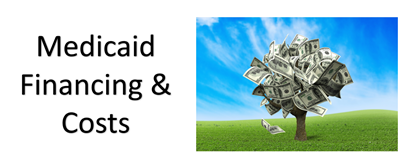MM Curator summary
The latest version of the COVID relief bill includes an additional 5% federal matching for states to expand.
The article below has been highlighted and summarized by our research team. It is provided here for member convenience as part of our Curator service.
The relief bill included many elements that could benefit Medicaid and CHIP beneficiaries and state programs, particularly by increasing the federal medical assistance percentage.
Source: Getty Images
March 09, 2021 – Congress passed a $1.9 trillion relief package to support the nation’s coronavirus pandemic response efforts and the law could have particular significance for Medicaid and CHIP programs.
The bill passed in the Senate by a vote of 50 to 49. While it still resembled the American Rescue Plan put forth by the Biden administration to expand COBRA and Affordable Care Act marketplace subsidies, the bill sustained several changes in the Senate, American Hospital Association reported in a special bulletin on the policy.
As it stands with the Senate’s alterations, the law would offer an increased Federal Medical Assistance Percentage (FMAP) to incentivize states to expand their Medicaid programs. This newest boost to the FMAP would add five percentage points to the state’s base program for two years.
States that adopt Medicaid expansion during the public health emergency would receive the 6.2 percentage point FMAP boost—which CMS enacted in March 2020 due to the pandemic—as well as the five percentage-point increase described in the new law.
The main requirement would be that participating states offer continuity of coverage, including COVID-19 vaccine and treatment coverage.
“The increased match does not apply to the already-enhanced matching rate for expansion populations, to federal matching rates for Medicaid Disproportionate Share Hospital (DSH) payments or CHIP,” the AHA special bulletin clarified.
Medicaid and CHIP beneficiaries would continue to receive the vaccine for free. The federal government would cover vaccine and vaccine administration up to 100 percent of the FMAP until a full year after the end of the public health emergency.
The federal government would also match 100 percent of the FMAP in order to cover vaccination and treatment for the uninsured population.
From the fourth quarter 2020 earnings calls, it was clear that payers such as Centene anticipated an increase in the FMAP. The higher FMAP could increase their revenues for 2021, which have already received a boost from lower utilization of care.
The FMAP would not be restricted to COVID-19 vaccinations and treatment, however. Funds towards home-and-community-based services would also be higher for a year. The Urban Indian Organizations and Native Hawaiian Health Care Systems would likewise receive more FMAP support.
Apart from directly coronavirus-related funding, the legislation also sought to improve continuity of coverage for pregnant beneficiaries and new mothers on Medicaid.
The bill would allow states to extend full Medicaid benefits and Children’s Health Insurance Program (CHIP) coverage to pregnant beneficiaries for up to a year after giving birth. This flexibility would be available to states for five years.
Studies have demonstrated that longer postpartum Medicaid coverage can improve patient outcomes for mothers and infants. These results have been particularly evident for Medicaid expansion states.
Additionally, studies have linked Medicaid funding cuts to poor health outcomes for child beneficiaries. The positive health effects of Medicaid coverage can follow a child through to young adulthood and may lower the incidence of childhood mortality and chronic disease.
The law would set aside $10 billion for coronavirus vaccine and testing activities under the Defense Production Act, $70 billion for coronavirus vaccine, testing, and workforce, $6 billion for the researching, manufacturing, and purchasing of coronavirus vaccines, and $1 billion to “strengthen vaccine confidence,” the bill outlined.
Another $47.8 billion would go towards implementing the national coronavirus testing strategy and $1.75 billion would be used for genomic sequencing and surveillance.
Although the Senate’s bill was very much like the one that passed in the House of Representatives two weeks prior, there were several key changes to elements related to rural hospital funding, the Medicare wage index, coronavirus-related funding, and support for families and small businesses.
The House has to ratify the changes that the Senate made to the law before the bill goes to the president’s desk.
Clipped from: https://healthpayerintelligence.com/news/how-the-1.9t-covid-19-relief-package-impacts-medicaid-chip

